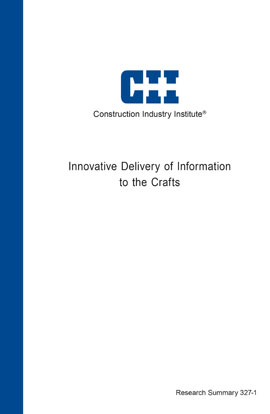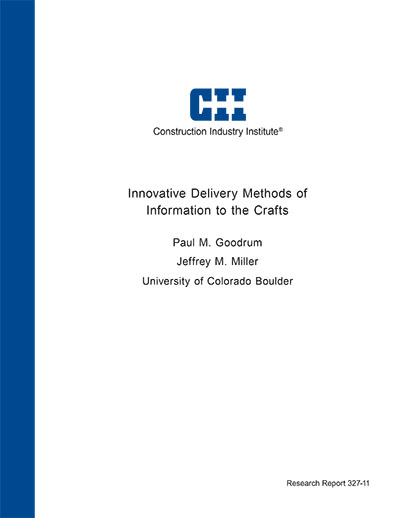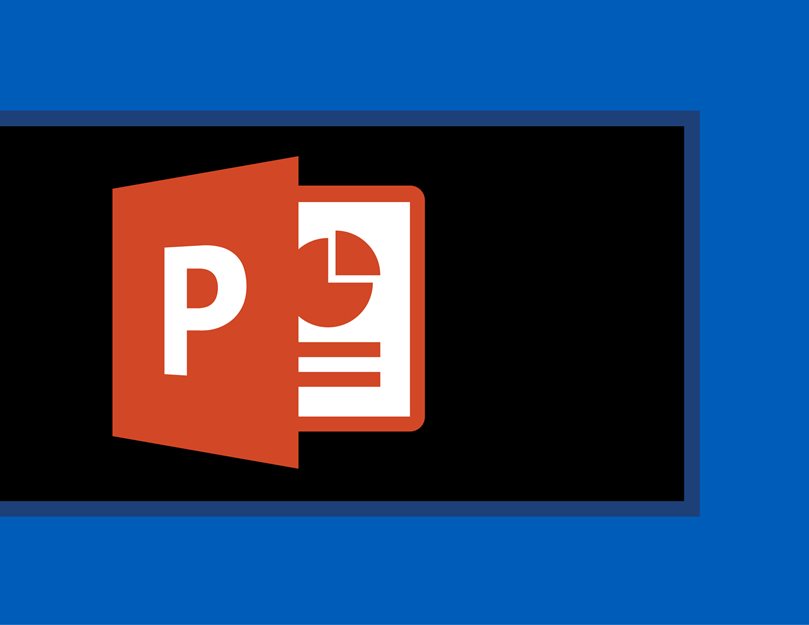
Innovative Delivery of Information to the Crafts
CII chartered Research Team (RT) 327, Innovative Delivery of Information to the Crafts, to explore ways that engineering can improve overall project delivery, particularly with respect to its delivery of information to craft workers. From the outset, the research team observed that, in spite of hundreds of millions of dollars of industry investment in 3D design technology, the engineering deliverable to construction has remained relatively unchanged for the past 60 years. Rather than investigating the entire spectrum of deliverables, RT 327 focused on the piping craft. Piping demands the largest percentage of direct labor and constitutes a high percentage of the material on most industrial projects. The primary engineering deliverable to the craft for fabrication and erection of piping systems is the piping isometric.
The research team conducted interviews with piping craft foremen and supervisors working in six different workshops around the U.S. and Canada. The results revealed the general misconception that providing the craft with 3D CAD models will eliminate the need for plans and sections and, thus, save engineering hours. RT 327 found instead that this approach ultimately requires more work from engineering, since craft workers usually require more information. Since these 3D models are typically located at remote workstations, and since the craft also only receive stacks of piping isometrics at the workface (documents that are difficult to translate mentally from 2D to 3D), they often request more detailed instructions for piping erection.
Given this “construction unfriendly” reality, RT 327 chose to explore non-traditional ways to provide the craft with the needed information. The team investigated several innovative deliverables and delivery methods: two-sided isometrics; pre-defined annotated 3D model shots; 3D printed models; hand-held devices; and a large-screen field kiosk. All were deemed of value, but the team found that craft workers favor the two-sided isometric and, thus, chose it as the focus of the research effort.
By conducting field experiments, the team found that craft given two-sided isometrics demonstrated an astounding 16-percent improvement in pipe erection time. Quality and rework rates also improved dramatically. Moreover, the team determined that—given that producing two-sided isometrics only adds minimal engineering costs—for every one engineering dollar spent on these drawings, projects can save 34 dollars in the field. The research also revealed the unexpected benefit that delivering innovative information enables management to utilize less-skilled craft workers more effectively.
Although the technology needed to produce the two-sided isometric is now more than 10 years old, the industry has not adopted this superior engineering deliverable as a standard. Indeed, in spite of the fact producing and deploying these drawings requires no capital investment and minimal training time, the research team was unable to identify even one company using this information delivery method. The findings of this research strongly suggest that the industry needs to make a major shift in its thinking about engineering deliverables to the craft.


